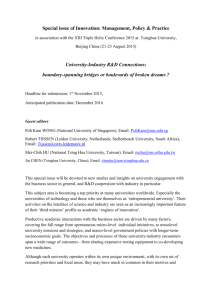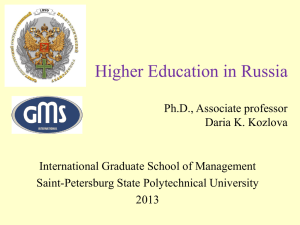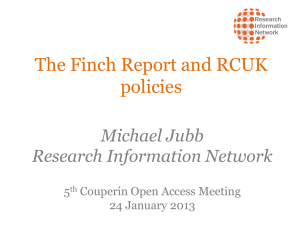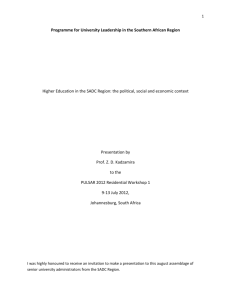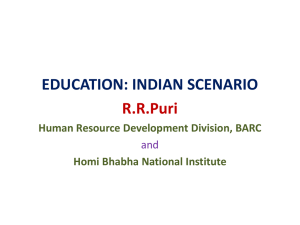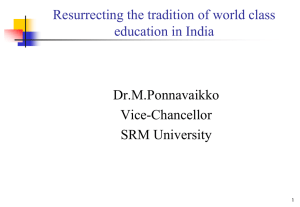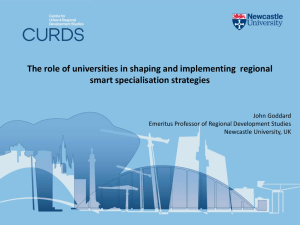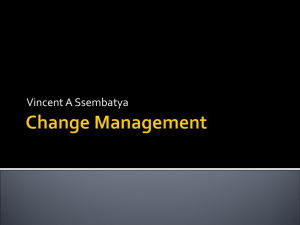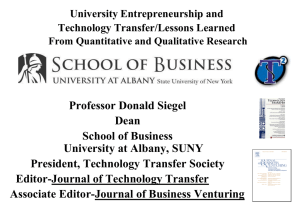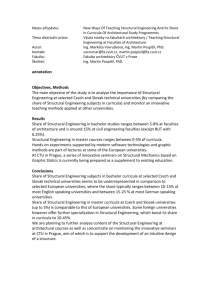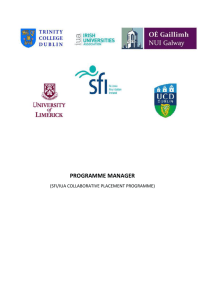8) Research Innovation and Leveraging the - crisu
advertisement
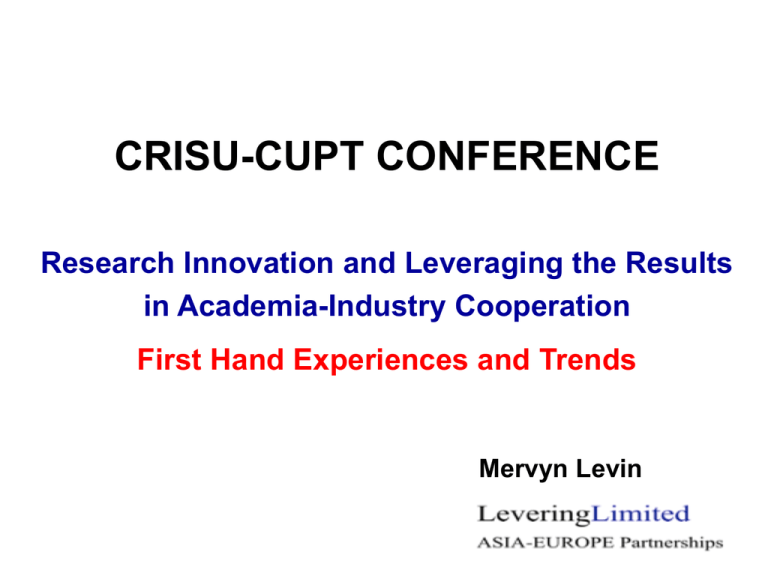
Preparing for Tomorrow’s CRISUCRISU-CUPT CONFERENCE Research Innovation and Leveraging the Results in Academia-Industry Cooperation First Hand Experiences and Trends Mervyn Levin The Research and Commercial Interface Some Current Activities – 2012 • Assessing Suitability For Government Funded Innovation e.g. Digital Industries, Creative Industries, SMEs, Cloud Computing USD 75 million • Monitoring Portfolio 25 Collaborative R&D Projects e.g. Digital, Creative, Construction, Manufacturing USD 35 million Selection of Academic Partners and Clients China Govt. Selection of Industry Partners and Clients Selection of Industry Partners and Clients Thailand (NSTDA/NECTEC) and Indonesia (BPPT) ICT Research Innovation Priorities EU SEACOOP Red=Common to Both Countries, Black=Thailand Only, Blue=Indonesia Only • Information Security • Embedded Systems • E-Learning Technologies • Open Source/Open Standards • Low Cost Computing and Inclusive/Accessible Computing • RFID • Digital Libraries • Environment/Energy Management • E-Health • Robotics and Automation • Intelligent Vehicular and Mobility Access • Next Generation Computing • Grid Computing • Web Technologies • Wireless Broadband/Sensor Networks UK Landscape For Research Innovation Technology Readiness Level: 1 2 3 4 5 6 7 8 9 Universities Technology Innovation Centres (Catapults) / Institutes Industry Research Centre Industry TIC / Institute (Large & SME’s) University Mapping the Landscape from Research Through to Challenge Areas For Each Key Technology and Application Area Research excellence RCUK Research Centres RCUK , charity & other centres and institutes (IMRC’s IKC’s EIT’s etc) Technology & Innovation Centres - Existing - Proposed - Potential RTO’s etc Other organisations in the area. Industrial R&D Centres Major R&D centres & incubators Industry Commitment UK Priorities -Opportunities for UK - Willingness to co-invest - Low Carbon -Digital Economy - Energy - Health/Medicine UK Government Technology Strategy Board Types of Research Innovation and Funding Commercialisation Prod. Prototype System Qual. System Dev. Technology Demo Technology Development Feasibility Blue sky Research Councils BAS APP EXP Research Council + others + Technology Strategy Board Funding Market readiness Commercial Investment Venture Capital Some Mechanisms for Stimulating Research and Commercial Collaboration • • • • • • • Collaborative Research and Development Knowledge Transfer Partnerships Secondments Internships Knowledge Transfer Networks Science Parks Incubators, e.g. Entrepreneurship What Do Academics Want from Industry? • Peer recognition • Real world experience • Intellectual property • Making their students employable with appropriate skills What Does Industry Want from Universities? • Research • Legitimacy • ‘Free’ • Talent (plus ‘creative cool’ / underground subculture) to provide commercial edge Facilitating University-Industry Collaboration (or why it doesn’t need to be difficult) • Business ‘Dating’ • Power of Referral of Students Working in Industry • Mentors • At Least 50% of University Staff Working Part-Time in Industry 1st Hand Lessons Overseeing Business-Led R&D with Universities • • • • • • Complementary of Skill Sets in Rich Learning Setting Trust Mutual Understanding of Objectives and Expectations Clarity of Project Deliverables Protection and Exploitation of Intellectual Property Upfront Agreement on Dispute Resolution How Can Universities Position Themselves to Work with Industry? • • • • Academics wearing Multiple ‘Hats’ Attract Sponsorship Developing Joint Funding Bids Reshape Curricula with Cross-Disciplinary Approach Why Adopt a More Cross-Disciplinary Approach? Industry and Policy Drivers – Digitisation of Society – New Educational Approaches – Ageing Society – Climate Change Why Adopt a More Cross-Disciplinary Approach? Research Innovation and Technology Transformations – Knowledge Curation/Search (Bio Science and ICT) – 3D Printing (Nano, Electronics, Materials Engineering, Design) – Visualisation, Simulation, Interactivity (ICT, Media, Art, Pedagogy) – Internet of Things (Sensors, Data Science, Social Sciences) – Big Data (Information Management across Physical and Social Sciences) CONCLUSIONS New Approaches to Education and Research Imperative for Innovation Collaborations Between Industry and Universities Have a Positive and Significant Impact on Industry Innovation Advisory Services to Universities Enhance Research Capacity, Capability to Work with Industry and Links with Universities in Europe • • • • • • Contribute to Development of More Interdisciplinary Curricula Industry Trends Shaping University Curricula Facilitate New Partnerships with Universities in Europe Bring Experts from Europe Share Case Studies of University-Industry Collaboration Deliver Domain Knowledge, e.g. digital content, innovation, creative economy, games, programme management in collaborative environments • Proposal Writing for Funding Bids in International Programmes Contact Mervyn Levin Founding Director, Levering Ltd Innovation Think Tank E-mail mervyn.levin@gmail.com LinkedIn http://www.linkedin.com/in/mervynlevin




